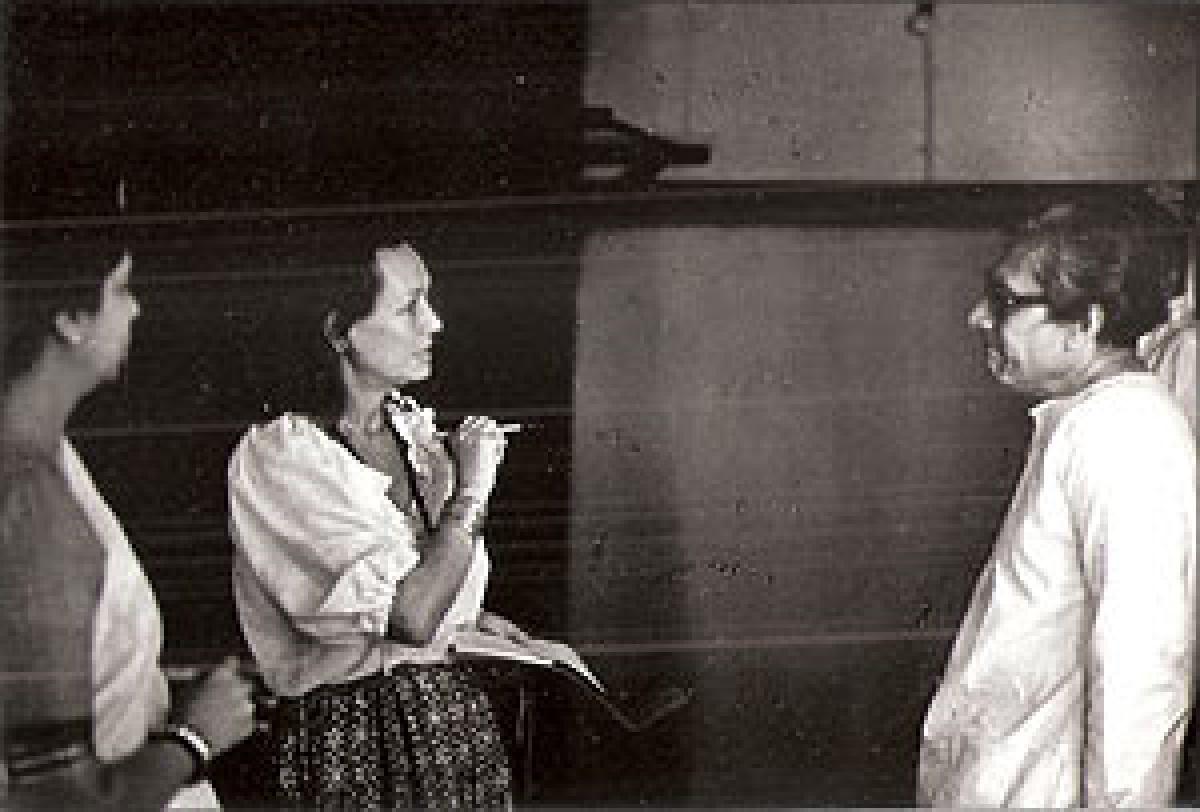Live
- Dairy Science students visited the Milk cooling plant
- Moody feels Pant ahead in keepers’ race for T20 WC squad; Srikkanth picks Rahul over Samson as reserve keeper
- Thanking voters for extending 'unparalleled support' to NDA, PM Modi says second phase 'too good'
- Natural Relief for Menstrual Cramps: Beetroot Juice Recipe
- Asha Worker died in a road accident
- Akshaya Tritiya 2024 Auspicious Hindu Festival on May 10th
- Celebrating World Veterinary Day 2024: Safeguarding Your Pet’s Vision with Expert Tips
- NSG joins CBI in searching residence of Sheikh Shahjahan’s relative
- Maharashtra: Peeved state unit Congress Working President quits 2024 LS polls campaign
- Archery World Cup: Deepika storms into individual semis; Compound Mixed Team in final
Just In

It’s the 100th birth anniversary of Sombhu Mitra (1915-1997), who is often described as a quintessential man of Bengali theatre. Also known as a director, producer and playwright, he is considered by many to be the greatest actor on Bengali stage. He appeared first as an actor in the commercial theatre circuit around the Second World War.
 It’s the 100th birth anniversary of Sombhu Mitra (1915-1997), who is often described as a quintessential man of Bengali theatre. Also known as a director, producer and playwright, he is considered by many to be the greatest actor on Bengali stage. He appeared first as an actor in the commercial theatre circuit around the Second World War.
It’s the 100th birth anniversary of Sombhu Mitra (1915-1997), who is often described as a quintessential man of Bengali theatre. Also known as a director, producer and playwright, he is considered by many to be the greatest actor on Bengali stage. He appeared first as an actor in the commercial theatre circuit around the Second World War.
Thereafter, in 1944, he joined Indian People’s Theatre Association (IPTA), an off-shoot of a progressive association of writers and artists. His directorial debut came with Jabanbandi (Confession) of Bijon Bhattacharya, a founder member of IPTA, and Muktadhara (Released Stream) of Tagore. “Aar kato chanchabo Babu ek mutho bhater jonney?”(How long will we cry for a handful of rice?) – a dialogue from his much acclaimed Nabanna (New Harvest), a character-centred play written in the background of the worst ever famine of Bengal in 1943-44 – revealed political events through the characters.
He left IPTA in 1948 and staged two other performances of Nabanna, and Tulsi Lahiri’s Pathik (Wayfarer) under the banner of a theatre group, which in 1950 came to be known as Bohurupee (Masquerade). Under the sensational direction of Mitra, Bohurupee theatre group staged Ulukhagra (A Mere Trifle), written by Mitra, and Chenda Tar (Broken Strings) of Tulsi Lahiri. In 1951, the legendary surprised theatre lovers by presenting Bibhab (Incitement), partly based on Artaud’s surrealist theatre which emphasises the avoidance of sets and props.

© 2024 Hyderabad Media House Limited/The Hans India. All rights reserved. Powered by hocalwire.com







